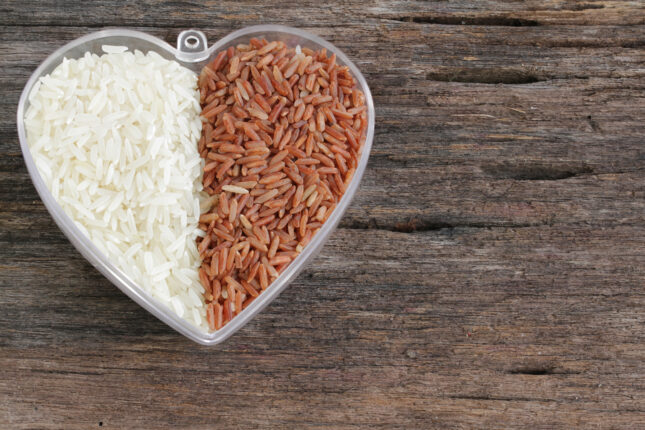
November 14, 2023
Rice, a staple grain consumed by millions worldwide, comes in various types, each with its unique characteristics, flavors, and nutritional profiles. Among the most common and widely debated are white and brown rice.
Despite originating from the same grain, these two types of rice undergo different processing methods, resulting in distinct differences in texture, taste, and nutritional value!
The Story Behind White and Brown Rice Grains
Rice is a versatile and foundational ingredient found in kitchens worldwide, yet not all rice is created equal. The journey from field to table transforms this grain into various forms, with white and brown rice standing out as two of the most popular varieties. While they may start as the same raw grain, the processing they undergo significantly alters their characteristics!
Brown rice has the following characteristics:
- Whole Grain Structure: Brown rice maintains its whole grain structure, including the bran, germ, and endosperm, whereas white rice has the bran and germ removed.
- Nutrient-Rich Bran Layer: The bran layer of brown rice is rich in fiber, vitamins, and minerals, contributing to its higher nutritional value.
- Presence of the Germ: Retaining the germ means that brown rice has more vitamins, minerals, and healthy fats.
- Distinct Nutty Flavor: Brown rice has a unique nutty flavor, which adds a different dimension to dishes compared to the mild taste of white rice.
- Chewy Texture: The additional layers give brown rice a chewier texture.
Comparatively, white rice has the following characteristics:
- Refined Grain: White rice is a refined grain, meaning the bran and germ layers have been removed, leaving mostly the starchy endosperm.
- Smoother Texture: The removal of the outer layers gives white rice a smoother, softer texture.
- Milder Flavor: White rice has a more subtle, milder flavor compared to the nutty taste of brown rice.
- Faster Cooking Time: Without the outer bran layer, white rice cooks faster than brown rice.
- Gluten-Free: Like brown rice, white rice is naturally gluten-free.
Brown rice, with its whole grain composition, offers a richer nutritional profile and a robust, chewy texture, making it a favorite for health-conscious consumers and those seeking a more hearty eating experience. White rice, on the other hand, boasts a milder taste, smoother texture, and longer shelf life, solidifying its status as a culinary staple across the globe. Regardless of your personal preference or dietary needs, understanding these nuances allows for a more informed choice, enabling you to fully appreciate the diversity and versatility that rice brings to the table!

